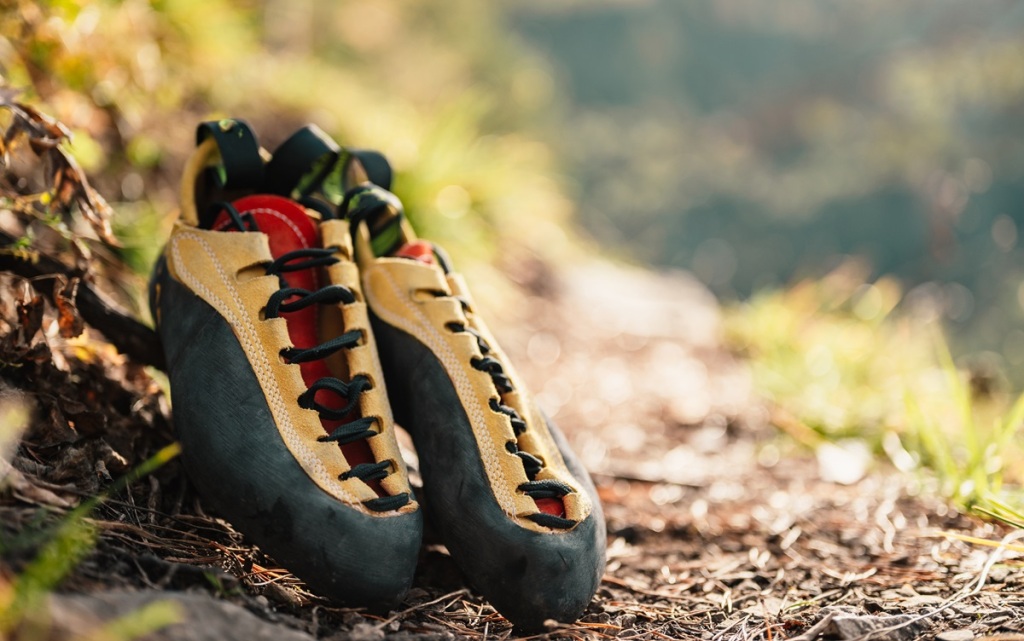Rock climbing shoe mens can make or break your performance on the wall. As a beginner, you may not realize subtle differences in shoe features drastically change how you climb.
Selecting the right shoe enables trusting footholds, scrambling overhangs, and conquering projects. This guide explains the key climbing shoe features that matter most.
Downturn and Shape
The shoe downturn describes how aggressively curved the toe is. More curved shoes better transfer power to small footholds for advanced climbers. However, extremely downturned shoes sacrifice comfort and versatility. As a beginner, prioritize a moderate downturn over aggressive options.
Consider the overall shoe shape too. Asymmetrical shoes cater to specific foot shapes and provide precision edging. Opt for a comfortable, neutral shape as a novice climber. You can specialize later as your technique and preferences evolve.
Midsole Type
The midsole impacts sensitivity and support. Thicker midsoles offer more shock absorption and comfort for long routes and crack climbing. Thinner midsoles excel for sensitivity on overhangs and bouldering.
As a beginner, err towards a moderately thick midsole for comfort. Sensitivity gains with super thin soles are wasted if footholds feel painful. Prioritize working on technique over maximizing sensitivity early on.
Stiff midsoles edge better as force transfers directly into footholds. Softer midsoles conform better for smearing and comfort. Determine preferences here based on your favored climbing style.
Closure System
The closure system ensures a precise fit for performance and avoids painful slippage. Laces provide the highest degree of customization to adapt to the fit on demand. However, they are less convenient to adjust than other systems.
Velcro straps facilitate fit tweaks between climbs quickly. But they may loosen over time and lack fine-tuned control. Consider them if convenience is essential.
For a robust balance of precision and convenience, opt for shoes utilizing a power strap with another closure mechanism. The power strap takes pressure off the top of the foot when cranking on holds.
Prioritize shoes with an asymmetric design providing an especially snug heel cup. This prevents sloppy heel movement during daring high steps and lunges.
Rubber Thickness and Texture
The thickness and texture of the rubber dramatically impact traction and durability. Softer rubber with open-faced treads sticks better to rock for smearing and friction slabs. Firmer-edged rubber provides better precision on pockets and crystals.
Thinner rubber offers unmatched sensitivity but wears out quicker. Replacing shoes annually may be worth maximizing tactile feedback.
Consider rubber placement too. Full rubber coverage lasts longer but reduces breathability. Combining high friction and moderate-thickness rubber in the toe and heel preserves top-notch edging with some durability.
Determine the ideal thickness and texture for your climbing area and technique level. Rubber preferences should evolve as your climbing improves over the years.

Overall Fit and Comfort
No shoe feature matters more than the overall fit. Shoes must be snug enough to prevent slippage during dynamic moves without excessively constricting blood flow.
Ideally, your toes should have a bit of room to curl while the heel and midfoot feel secure. Pressure and pain should dissipate after 15-20 minutes once the shoes mold to your feet. Proper sizing ensures both high performance and injury prevention.
While advanced climbers can handle the precision tradeoff, avoid sizing aggressive shoes as small as a beginner. Pain inhibits technique development by shortening sessions. Remember to consider vertical endeavors and skill levels when selecting shoes. An advanced sport climber needs different features than a novice trad climber. Optimizing features for your needs and goals allows progression on the wall. Now get climbing!


Leave a comment